The Indigenous peoples of Patagonia have long captivated the imagination of explorers and historians alike. From the nomadic Tehuelche to the settled Mapuche and the seafaring canoe tribes, each group possesses a rich cultural heritage that has uniquely shaped the region’s identity. Though their traditional ways of life were severely impacted by colonization, these communities continue to fight for their rights and preserve their identities through art, language, and time-honored customs. Delving into their remarkable stories offers a glimpse into the resilience and diversity that define Patagonia’s indigenous legacies.
This experience made our list of the 6 Best Canoe And Kayak Experiences In Bariloche.
Key Points
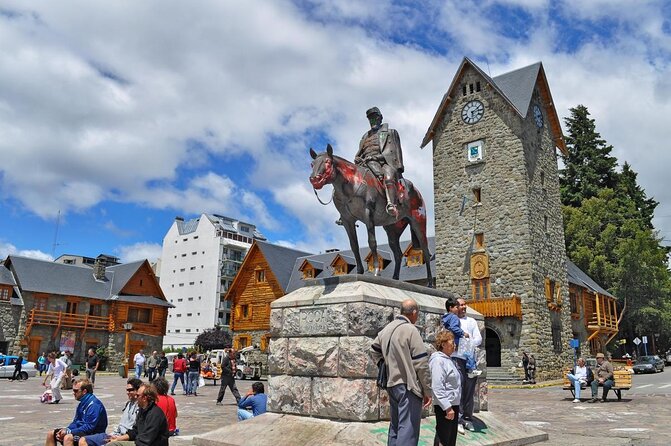
-
The Tehuelche, Mapuche, and canoe tribes are the indigenous peoples of Patagonia, with a rich cultural heritage showcased in Bariloche’s Patagonia Museum.
-
Colonization had devastating impacts on these indigenous groups, leading to displacement, cultural suppression, and decimation of their populations.
-
The Centro Cívico in Bariloche highlights the architectural and cultural contributions of these indigenous communities.
-
The guided tour of Patagonia Museum provides an immersive experience, exploring the artifacts, artwork, and historical exhibits related to the indigenous groups.
-
The tour’s focus on indigenous heritage and the impacts of colonization offers insights into the enduring presence and advocacy of Patagonia’s First Peoples.
Overview of the Tour
The Indigenous Peoples of Patagonia tour offers travelers a unique opportunity to explore the rich cultural heritage of the region’s indigenous groups, including the Tehuelche, Mapuche, and canoe tribes.
The focus is on uncovering the stories and legacies of these indigenous communities, with visits to important monuments and guided tours of the Patagonia Museum.
Participants will also have the chance to stroll through the charming downtown of San Carlos de Bariloche.
The small group size ensures personalized attention from the knowledgeable guides, who provide insights into the impacts of colonization on the indigenous populations.
Here are more great tours and experiences we've reviewed in Bariloche
Tour Details
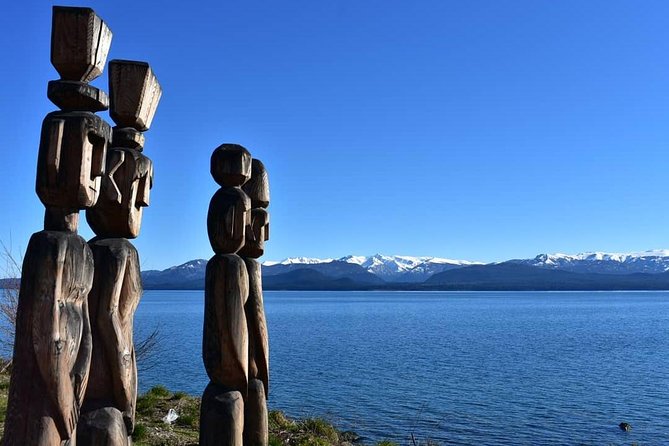
The tour begins at the Secretaría de Turismo Bariloche, located at Libertad 56 in San Carlos de Bariloche, Río Negro, Argentina. It ends back at the meeting point. The small group size is capped at 15 travelers, and the tour price starts from $29.00. Regrettably, the tour is non-refundable upon cancellation.
| Meeting Point | End Point | Group Size | Price |
|---|---|---|---|
| Secretaría de Turismo Bariloche | Returns to meeting point | Max 15 travelers | From $29.00 |
The tour takes visitors to the Centro Cívico historic monument for 30 minutes of free admission, and a 30-minute lakeside walk along Lago Nahuel Huapi, also free of charge. Additional stops and activities are included in the itinerary.
Tour Itinerary
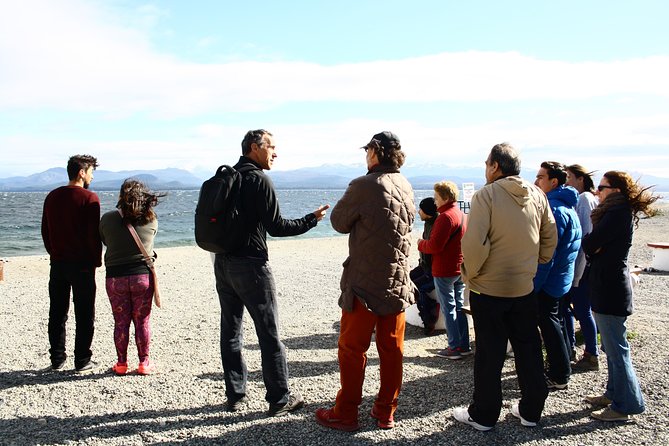
The tour begins with a visit to the Centro Cívico, a historic monument located in San Carlos de Bariloche.
Travelers will spend 30 minutes exploring this landmark, which offers free admission.
Next, the group will embark on a 30-minute lakeside walk along the shores of Lago Nahuel Huapi, taking in the stunning natural scenery.
The tour also includes:
- Additional stops and activities, though the specific details aren’t provided
- A guided tour of the Patagonia Museum, offering a deeper dive into the region’s indigenous history
- A walk through the downtown area of Bariloche
- Personalized attention due to the small group size, allowing for a more intimate experience.
Accessibility and Requirements
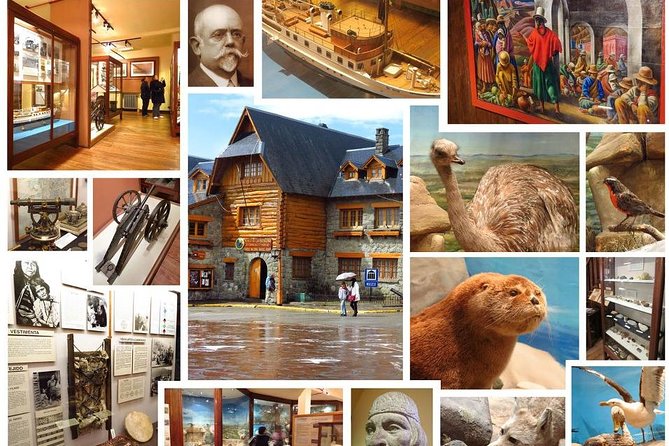
The tour isn’t wheelchair accessible, though it’s located near public transportation. Infants must sit on laps during the tour.
Travelers should have a moderate level of physical fitness to participate. The tour itinerary includes walking through the town’s historic center and along the shores of Lake Nahuel Huapi.
While the tour may not be suitable for those with mobility constraints, it offers a unique opportunity to explore the indigenous heritage of Patagonia up close.
The small group size ensures personalized attention from the guide, allowing for a more immersive experience.
Reviews and Ratings
Travelers have overwhelmingly praised the Indigenous Peoples of Patagonia tour, with an impressive overall rating of 5.0 based on 16 reviews.
The tour has received glowing feedback, with 14 five-star and 2 four-star ratings.
Key highlights include:
- Informative and engaging guides who provide a unique perspective on indigenous history
- Positive experiences shared by travelers, with many expressing appreciation for the tour’s focus on indigenous cultures
- The opportunity to visit important monuments and explore the stunning natural beauty of Patagonia
- The small group size, which allows for personalized attention and a more immersive experience.
- Fly Fishing Trips in Bariloche
- Bariloche: Half Day Small Circuit Tour – Mt Campanario and Llao Llao Peninsula
- From Bariloche: San Martín De Los Andes by the 7 Lakes Route
- Explore the Road of the Seven Lakes From Bariloche
- Kayak Paddling Adventure Around Bariloche
- Full Day Snowshoeing Experience – Snowshoe Hiking
Indigenous Monuments in Bariloche
One of the highlights of the Indigenous Peoples of Patagonia tour is the opportunity to explore indigenous monuments in the heart of San Carlos de Bariloche.
Visitors will discover the Centro Cívico, a historic monument that showcases the region’s indigenous heritage. The guided tour provides insights into the influences of Tehuelche, Mapuche, and other indigenous groups on the area’s architecture and design.
Through this experience, travelers gain a deeper appreciation for the enduring presence and contributions of Patagonia’s First Peoples.
The tour also includes a lakeside walk along Lago Nahuel Huapi, allowing participants to enjoy the natural beauty that has long sustained these vibrant cultures.
Colonization Impacts on Groups
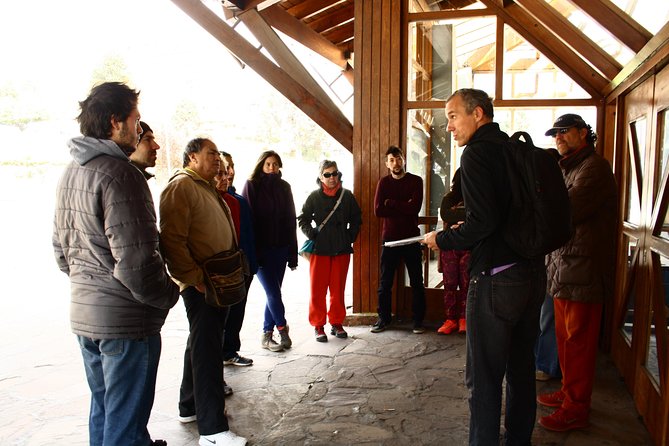
The legacy of colonization deeply impacted the indigenous groups of Patagonia, leaving an indelible mark on their cultural traditions, land rights, and hard-won sovereignty.
The Spanish and later Argentine settlements led to displacement, loss of ancestral lands, and the erosion of indigenous ways of life.
Key impacts included:
- Forced assimilation and cultural suppression
- Decimation of populations due to disease and conflict
- Restrictions on hunting, fishing, and traditional practices
- Marginalization and loss of political autonomy
Despite these challenges, the Tehuelche, Mapuche, and canoe tribes have persevered, maintaining their unique identities and continuing to advocate for their rights.
Guided Tour of Patagonia Museum
The guided tour of the Patagonia Museum provides visitors with a unique opportunity to explore the rich cultural heritage of the region’s indigenous communities. Led by knowledgeable guides, the tour explores the museum’s collection of artifacts, artwork, and historical exhibits that showcase the traditions, customs, and resilience of the Tehuelche, Mapuche, and canoe-dwelling tribes. Visitors can expect to learn about the devastating impacts of colonization on these groups, as well as the ongoing efforts to preserve and celebrate their cultural identities. The museum’s interactive displays and immersive experiences offer a captivating glimpse into the past and present of Patagonia’s indigenous populations.
| Exhibition | Highlights | Duration |
|---|---|---|
| Tehuelche Artifacts | Hunting tools, textiles, pottery | 30 minutes |
| Mapuche Artwork | Weavings, ceramics, jewelry | 45 minutes |
| Canoe Tribes | Dugout canoes, fishing equipment | 20 minutes |
| Colonization Impacts | Displays on disease, displacement | 25 minutes |
| Cultural Preservation | Contemporary indigenous initiatives | 15 minutes |
Frequently Asked Questions
What Traditional Foods Do the Tehuelche, Mapuche, and Canoe Tribes Eat?
The Tehuelche, Mapuche, and canoe tribes traditionally eat a variety of foods, including wild game, seafood, berries, and roots. Their diets are closely tied to the natural resources of their local environments.
How Do the Indigenous Groups Maintain Their Cultural Practices Today?
The indigenous groups maintain their cultural practices today by preserving traditional arts, crafts, and languages, participating in cultural events, and passing down ancestral knowledge to younger generations despite the ongoing impacts of colonization.
What Is the Significance of the Traditional Clothing and Artwork?
The traditional clothing and artwork of the indigenous groups serve as important expressions of their cultural identity and heritage. These artistic practices are often passed down through generations, preserving the groups’ unique traditions and connection to their ancestral lands.
How Can Visitors Respectfully Engage With Indigenous Communities?
Visitors can respectfully engage with indigenous communities by following local customs, participating in cultural activities with permission, and supporting indigenous-owned businesses. It’s important to approach interactions with openness, empathy and a willingness to learn about the community’s history and traditions.
What Environmental Challenges Do the Indigenous Groups Face in Patagonia?
The indigenous groups in Patagonia face environmental challenges such as climate change, deforestation, and resource exploitation. They must adapt their traditional ways of living to these threats while preserving their cultural heritage.
Recap
The rich cultural heritage of Patagonia’s indigenous peoples, including the Tehuelche, Mapuche, and canoe tribes, has endured despite the severe impacts of colonization. These communities continue to advocate for their rights and preserve their unique identities through art, language, and tradition. Exploring the region’s indigenous monuments and visiting the Patagonia Museum provide valuable insights into their resilient histories and contemporary experiences.
More Kayak & Canoe Tours in Bariloche
More Tour Reviews in Bariloche
Not for you? Here's more things to do in Bariloche we have recnetly reviewed
- 6 Best Canoe And Kayak Experiences In Bariloche
- 3 Best Guided Tours In Bariloche
- 6 Best Canoe And Kayak Experiences In Bariloche
- 9 Best Full-Day Tours In Bariloche
- 11 Best Private Car With Driver Services In Bariloche
- San Martín De Los Andes by 7 Lakes
- Big Circuit
- Ski Baptism
- Afternoon in Extreme Enchanted Refuge – Cerro López
- El Bolson Adventure: A Scenic Day Trip
- Large Circuit in Bariloche – Long Circuit
- Snow Excursion in Bariloche – Suitable for the Whole Family
